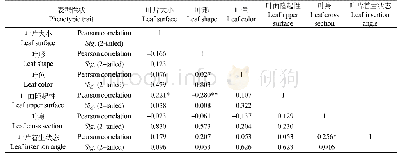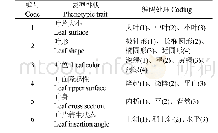《Table 1–Phenotypic variation in three traits studied under heat stress and control conditions.》
 提示:宽带有限、当前游客访问压缩模式
提示:宽带有限、当前游客访问压缩模式
本系列图表出处文件名:随高清版一同展现
《Genome-wide association study of heat stress-tolerance traits in spring-type Brassica napus L. under controlled conditions》
Eighty-eight accessions of spring-type B.napus from the USDA-ARS Germplasm Resources Information Network(GRIN)(Table S1) were used in this study.These genotypes are a subset of 104 spring genotypes that are available in the diverse GRIN collection.Spring-type canola generally flowers in 40–60 days.The experiment was conducted in a greenhouse and a plant growth chamber at North Dakota State University(NDSU),Fargo,ND,USA during 2014–2015.Two sets of experiments(set 1 and set 2)were conducted using a randomized complete block design(RCBD)with three replications per set.The set 1 experiment(control)was conducted in the greenhouse at 22/18°C(day/night)temperature until desiccation.Plants in the greenhouse were grown with a16-h photoperiod provided by natural sunlight supplemented with 400 W HPS PL 2000 lamps(P.L.Light Systems Inc.,Beamsville,Ontario,Canada).The plants in set 2 were grown in the same greenhouse and subjected for five days to heat stress in the growth chamber starting at the sixth day after flower initiation.All plants did not flower on the same day.Only the plants at the 6-day flowering stage were transferred into the plant growth chamber.The artificial heat simulation setup in the plant growth chamber was similar to that used in earlier experiments[11–13,27,28]with slight modifications.The heat-stress simulation condition,based on North Dakota weather,included a temperature of 18°C for 8 h from 22:00 to6:00 followed by temperature ramping from 18°C to 35°C over6 h from 6:00 to 12:00,maintenance at 35°C for 4 h from 12:00to 16:00,and ramping down from 35°C to 18°C over 6 h from16:00 to 22:00.The relative humidity in the growth chamber was maintained at 70%and light was provided for 14 h every day.The plants in the growth chamber were watered twice daily at 300 m L plant-1per application.After the heat treatment,the plants were returned to the original greenhouse room at 22/18°C day/night temperature and grown until desiccation.Flowering buds were tagged before and after heat stress to characterize pod development during the period of heat stress.Flower buds were collected from the heat-stressed plants on the third day of heat treatment and buds were collected from the control plants at the same time.Pollen sterility,sterile/aborted pods on main raceme,and number of pods on main raceme were recorded for all plants in set 1(control)and set 2(heat stress treatment).
| 图表编号 | XD0012313900 严禁用于非法目的 |
|---|---|
| 绘制时间 | 2018.04.01 |
| 作者 | Mizanur Rahaman、Sujan Mamidi、Mukhlesur Rahman |
| 绘制单位 | Department of Plant Sciences, North Dakota State University、Hudson Alpha Institute for Biotechnology、Department of Plant Sciences, North Dakota State University |
| 更多格式 | 高清、无水印(增值服务) |





